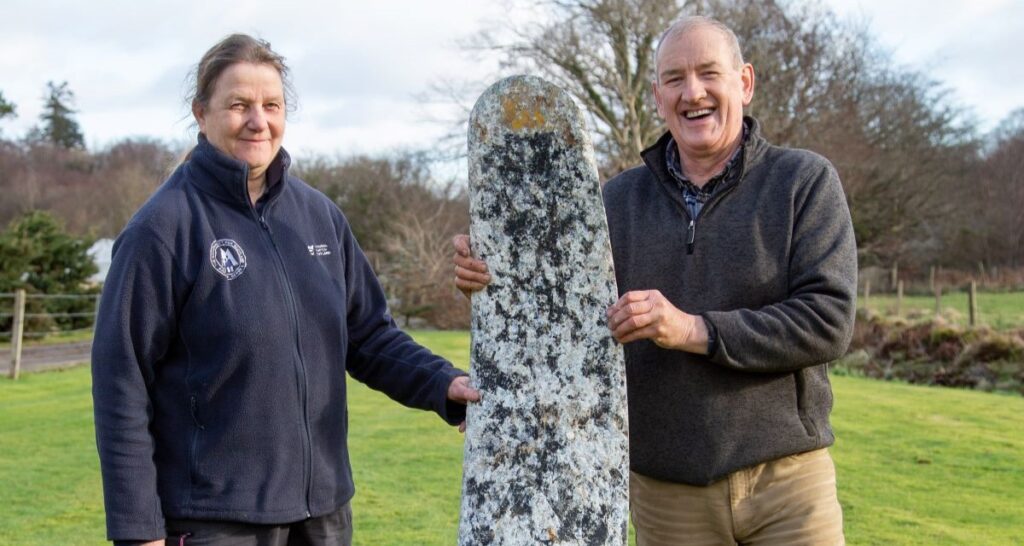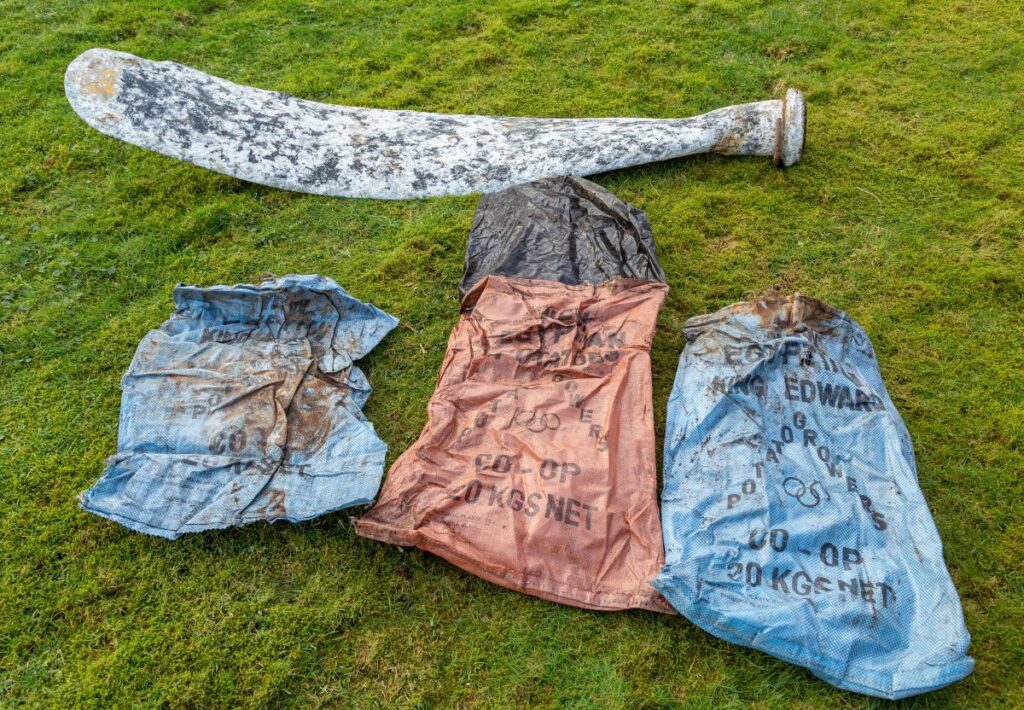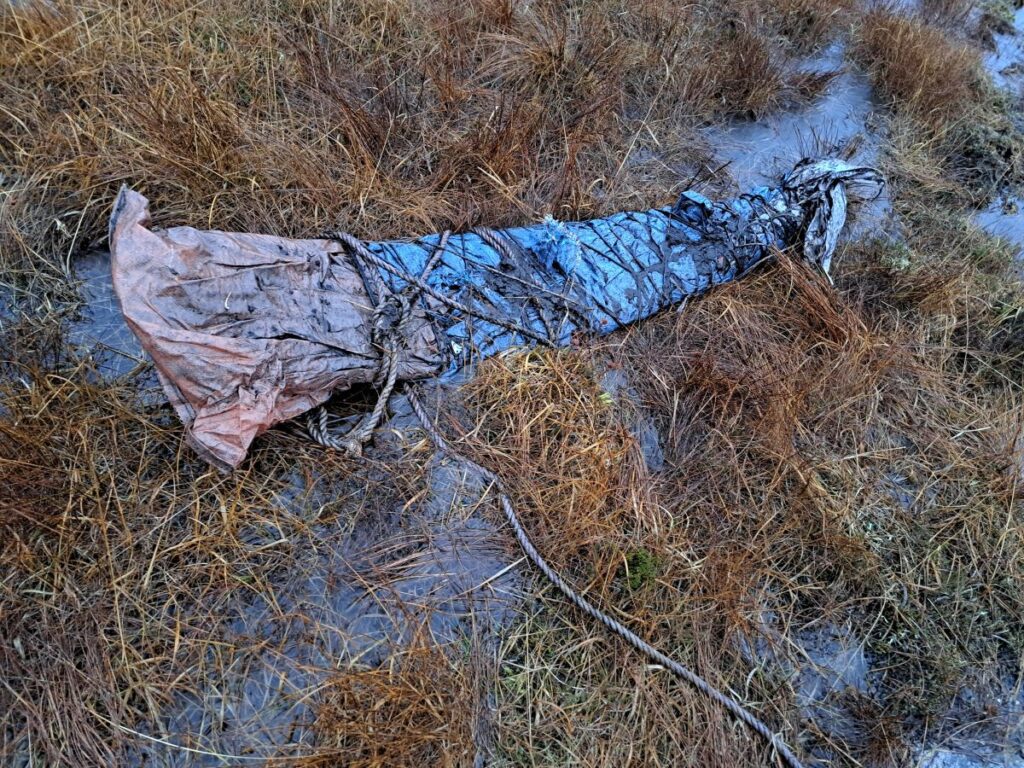
Propeller thought to be from WWII plane discovered in Isle of Arran peat bog
A propeller thought to be from a WWII plane has been found buried in a peat bog on the Isle of Arran.
The blades are believed to be from a B17 Flying Fortress or a B24 Liberator, and were found wrapped in potato sacks during peatland restoration work at Coire a’Bhradain.
A contractor initially feared he might have discovered human remains when he came across the sacks while carrying out peatland restoration.
But work is now underway to discover where the propeller came from, as its location falls outside two previously known crash sites nearby.
The National Trust for Scotland (NTS) cares for the land where the propeller was found. Derek Alexander, head of archaeology, said the find was ‘intriguing.’
‘There are two previously known plane crash sites further up the glen on the steep cliff side of Beinn Nuis, but this object was found outside the mapped spread of debris from both of these, which has caused some uncertainty about which aircraft they belong to,’ he said.

The blades are believed to be from a B17 Flying Fortress or a B24 Liberator.
‘The plane part was discovered when our contractor’s excavator bucket hit something solid and metallic.
‘On closer inspection, we found it had been wrapped and tied in a potato sack, which added further intrigue to the find that lay some distance from the spread of the wreckage of the former crash sites.
‘It may have been gathered during the clean-up of the site in the 1940s, immediately after the impact, or through subsequent work by the Trust in the 1980s.
‘It’s too early to tell, but we are determined to get to the bottom of it.’

NTS is not permitted to remove wreckage from the site.
NTS said there were six Second World War plane crashes on land NTS now cares for on Arran, which are protected sites.
‘We are not permitted to remove wreckage from such sites without first obtaining permission – so the accidental discovery of a propeller blade, out with the known spread of fuselage debris, that had obviously been previously moved is quite an unusual situation.
‘We are working with an aviation and aircraft expert to identify the objects, and there is potential to match up the serial numbers of the parts to historical records held by the Military.
‘This will help us get closer to the origin of this fascinating discovery, continue to share these stories, and remember those who lost their lives.’
Kate Sampson, senior ranger at the NTS on Arran, said: ‘I think our contractor got a bit of a shock when he saw the end of the potato sack sticking out of the bog as his first thought was that it could be human remains.
‘However, with careful excavation the wrapped propeller was revealed with a rope still tied around it, and we suspect someone might have been dragging the propeller down the hill when it sunk deep into the peat, not to be recovered until now.’
Read more News stories here.
Subscribe to read the latest issue of Scottish Field.
TAGS

